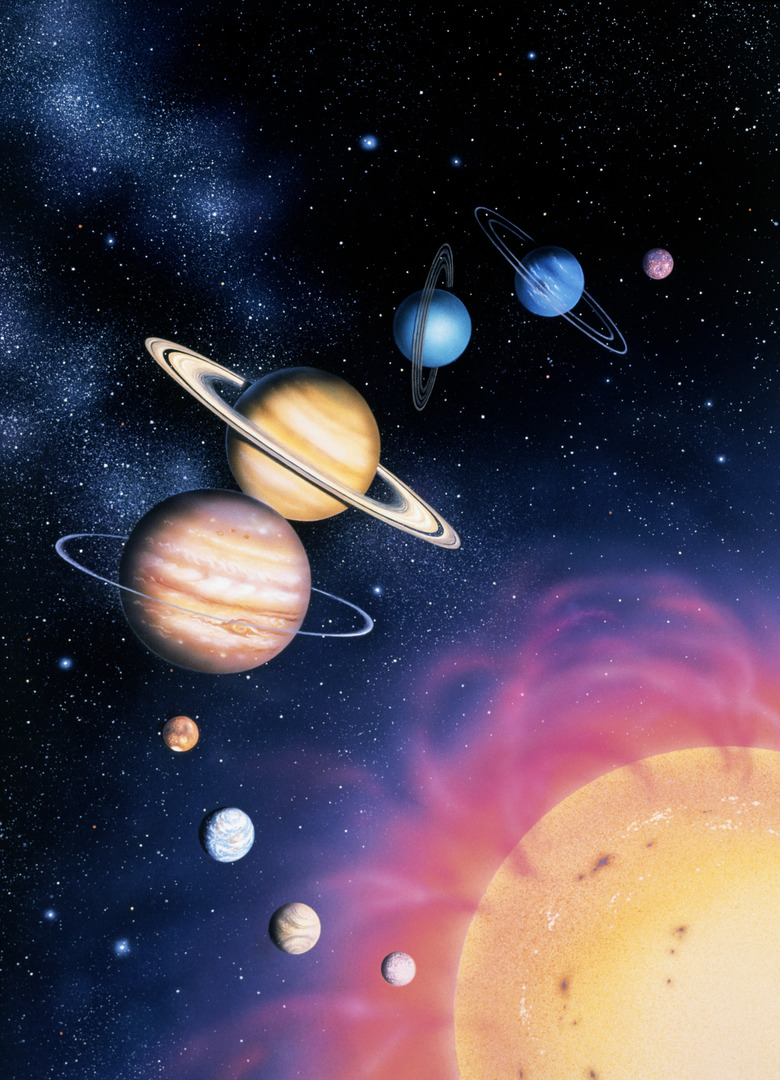Has There Been Any Type Of Exploration Done On Mercury Before?
Temperatures on Mercury range from daytime highs of 430 degrees Celsius — about 800 degrees Fahrenheit — to nighttime lows near -180 degrees Celsius, or around -290 Fahrenheit. No manned missions have been made as of 2013. The long journey and the planet's temperature extremes require expensive preparations and more supplies than are practical to carry. However, two spacecraft visited Mercury on separate trips that were 36 years apart.
Mariner 10
Mariner 10
Launched in 1973, Mariner 10 was the first attempt at studying Mercury by spacecraft. It's mission was to explore both Venus and Mercury, making Mariner 10 the first craft to explore two planets in the same mission and the first to use the gravity of one planet to slingshot toward another. Mariner 10 was equipped with an instrument package capable of studying Mercury's atmosphere, physical characteristics and surface features. Mariner 10 made three encounters with Mercury, the closest being within 327 kilometers — 203 miles — of the planet, which occurred on March 16, 1975. About a week later, the National Aeronautics and Space Administration (NASA) terminated contact with the spacecraft.
The MESSENGER Mission
The MESSENGER Mission
In 2004, NASA launched a second spacecraft mission to Mercury, this one making use of lighter construction materials, more miniaturized instrumentation and new course designs than were available when Mariner 10 was launched. The craft's name is an acronym for MErcury Surface, Space ENvironment, GEochemistry and Ranging. The tough, durable design of MESSENGER allows it to withstand the heat of traveling so close to the Sun. The spacecraft's mission is to orbit Mercury in a wide ellipse that takes it as close as 200 kilometers (124 miles) from the planet's surface to 15,193 kilometers (9,420 miles) at the farthest point in the orbit. As of 2013, MESSENGER made about 2,600 orbits of Mercury.
An Inhospitable Planet
An Inhospitable Planet
Not only are Mercury's temperature swings volatile, but scientists also learned that the planet's atmosphere is a thin mixture of oxygen, sodium, hydrogen, helium, and potassium. Orbiting within about 58 million km (36 million miles) of the Sun, Mercury is constantly bombarded by solar wind — highly charged particles emitted by the Sun. The surface is pockmarked by craters in much the same way as the Earth's moon. Neither space mission has shown any evidence that life as we know it exists or has existed on the planet.
Terrain and Features
Terrain and Features
Mariner 10's cameras revealed a surface that NASA describes as "chaotic terrain" marked by rocky soils and high ridges as well as craters. The Mariner spacecraft also detected a weak magnetic field on the planet. With MESSENGER's more intimate look at Mercury, scientists discovered that Mercury has a large core which is at least partially liquid. MESSENGER also sent back photos of volcanic vents on the planet surface. These vents likely spewed large amounts of lava onto the planet's surface at some point in its history.
References
- National Aeronautics and Space Administration: Mercury: Overview
- National Aeronautics and Space Administration: Mariner 10
- National Aeronautics and Space Administration: MESSENGER
- National Aeronautics and Space Administration: MESSENGER
- CNES: The Exploration of Mercury
- University of Northern Iowa: Mercury
Cite This Article
MLA
Korpella, Robert. "Has There Been Any Type Of Exploration Done On Mercury Before?" sciencing.com, https://www.sciencing.com/has-there-been-any-type-of-exploration-done-on-mercury-before-12731027/. 8 December 2013.
APA
Korpella, Robert. (2013, December 8). Has There Been Any Type Of Exploration Done On Mercury Before?. sciencing.com. Retrieved from https://www.sciencing.com/has-there-been-any-type-of-exploration-done-on-mercury-before-12731027/
Chicago
Korpella, Robert. Has There Been Any Type Of Exploration Done On Mercury Before? last modified August 30, 2022. https://www.sciencing.com/has-there-been-any-type-of-exploration-done-on-mercury-before-12731027/
